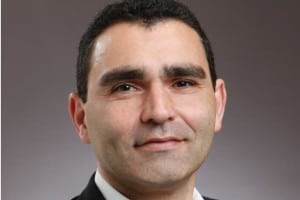
Storytelling, as explained by Douwe Bergsma, is indeed a different way of looking at marketing communications, one that requires new processes, metrics and staff.
Bergsma, CMO of Georgia-Pacific—the paper goods giant behind the Brawny, Quilted Northern and Dixie brands—offers some fascinating details that often separate a good story from a great one, including three secrets to crafting a successful marketing story.
Neisser: Are your KPIs different than you would have had in a pre-storytelling era?

Douwe Bergsma: On a high level, I don’t think so. We still look at brand awareness and key brand attributes and the impact it has on penetration, loyalty and ultimately our profit. We just noticed that the way we were approaching it, we were not optimally achieving our KPI. We still want to see how Brawny does with the idea of toughness and gentleness. We still want to know if our core consumers—our key target segments—still appreciate Brawny in a way that they are receiving the right value for their money, compared to their alternatives. At the highest level, it didn’t change. At the lower level, it did, because before, we were single-mindedly measuring the impact of a 30-second ad on this metric. Now we look at the combined impact, recognizing that at the end of the day, it’s still about driving conversion from intent to purchase.
Neisser: Do marketers need to be more patient with storytelling?
Douwe Bergsma: In the development, yes. It takes longer for a fully integrated story to develop because design plays a key role. One of the things we’ve learned is that a story needs to be holistic, including the design of the brand packaging as well as the design of the products inside. One example of this is the way the Brawny giant comes to life on our packaging. And packaging, in our industry, has a longer lead time. So, to do it right and holistically, it takes longer to prepare and develop. In actuality, I don’t think the level of patience is different from what we used to do.
Neisser: Let’s get specific. What’s your leading example of storytelling?
Douwe Bergsma: Brawny is the only brand where we have completely overhauled our packaging as well as our other touch points. We’ve developed our story framework—the conflict is really between tough and gentle. And then the fundamental human truth is about protecting yourself and those you love. This requires you to be understanding and open to what life throws at you, but also have the tenacity, toughness and strength to tackle any challenge. We were inspired by a quote from Roosevelt: “Speak softly and carry a big stick, you will go far.” We translated that into a campaign, featuring the Brawny giant. How do you tackle and handle life’s challenges? By staying strong while continuing to be gentle as these challenges come at you. We showcase The Brawny Man with the larger-than-life look he had in the 1970s — so there’s kind of a double meaning here—in our campaign, which represents kind of a gentle giant.
Neisser: In a programmatic real-time world, how do you adjust to storytelling, or does that play any kind of role in all of this?
Douwe Bergsma: Programmatic is more into where and when and what frequency; it’s less about the content. And our storytelling predominantly focuses on the content of our communication, which closely relates to our media placement. So programmatic has not really impacted the story we’re telling, more when and where we tell it. And obviously, it allows us to find those people that are in our target audience. It allows us to find our specific audience better and faster than we normally do.
Learn more storytelling secrets at The Social Shake-Up, which will be held May 22-24, 2017, in Atlanta. Brand communicators from Coca-Cola, Dunkin' Donuts, Nissan, Arby's, The Home Depot and many more will speak on a breadth of topics from content marketing to measurement to Snapchat strategy.
Neisser: What are some of the pitfalls to be avoided?
Douwe Bergsma: First and foremost, it’s very tempting to just focus on the storytelling. You first need to really focus on the story framework. Because our whole industry is so used to drafting a brief to develop an ad. Draft a brief, write a Tweet. But before you do the brief, you actually need to know your story’s framework. It’s like sending an improv artist on stage who doesn’t know what a story framework is.

Founder and CEO
RENEGADE
Second, with storytelling, there is not a single linear pass to it. You need to be very agile and experimental and embrace the mistakes and the failures you have along the way and have a very experimental mindset. You need to do a lot of trial and error and go down specific pathways to figure out what’s going to work for the brand or what doesn’t.
And last but not least, we’ve learned that you also need to make sure you recruit and cherish the few storytellers in the building who have the passion and the talent to develop story frameworks. I discovered that there are quite a few people that have that innate balance at companies like Coca-Cola. In fact, Shari Neumann, who leads all our storytelling here at Georgia-Pacific is a former Coca-Cola person.
Drew Neisser is the publisher of Social Media Explorer and founder/CEO of New York City-based agency Renegade. This article originally appeared on SocialMediaExplorer.com. Republished with permission.
Connect with Drew: @DrewNeisser
